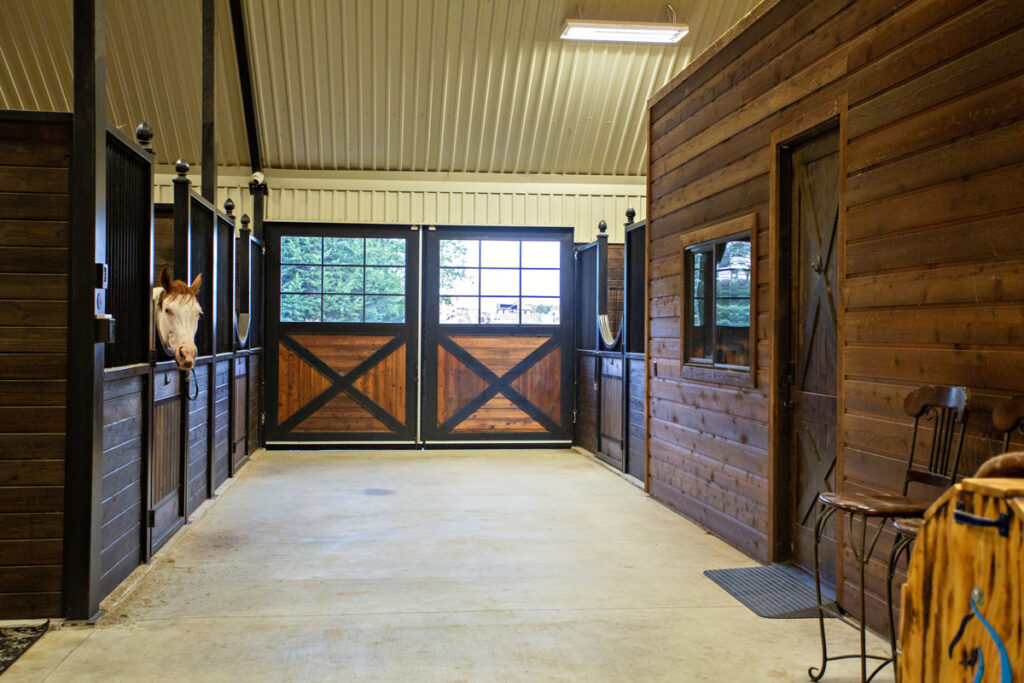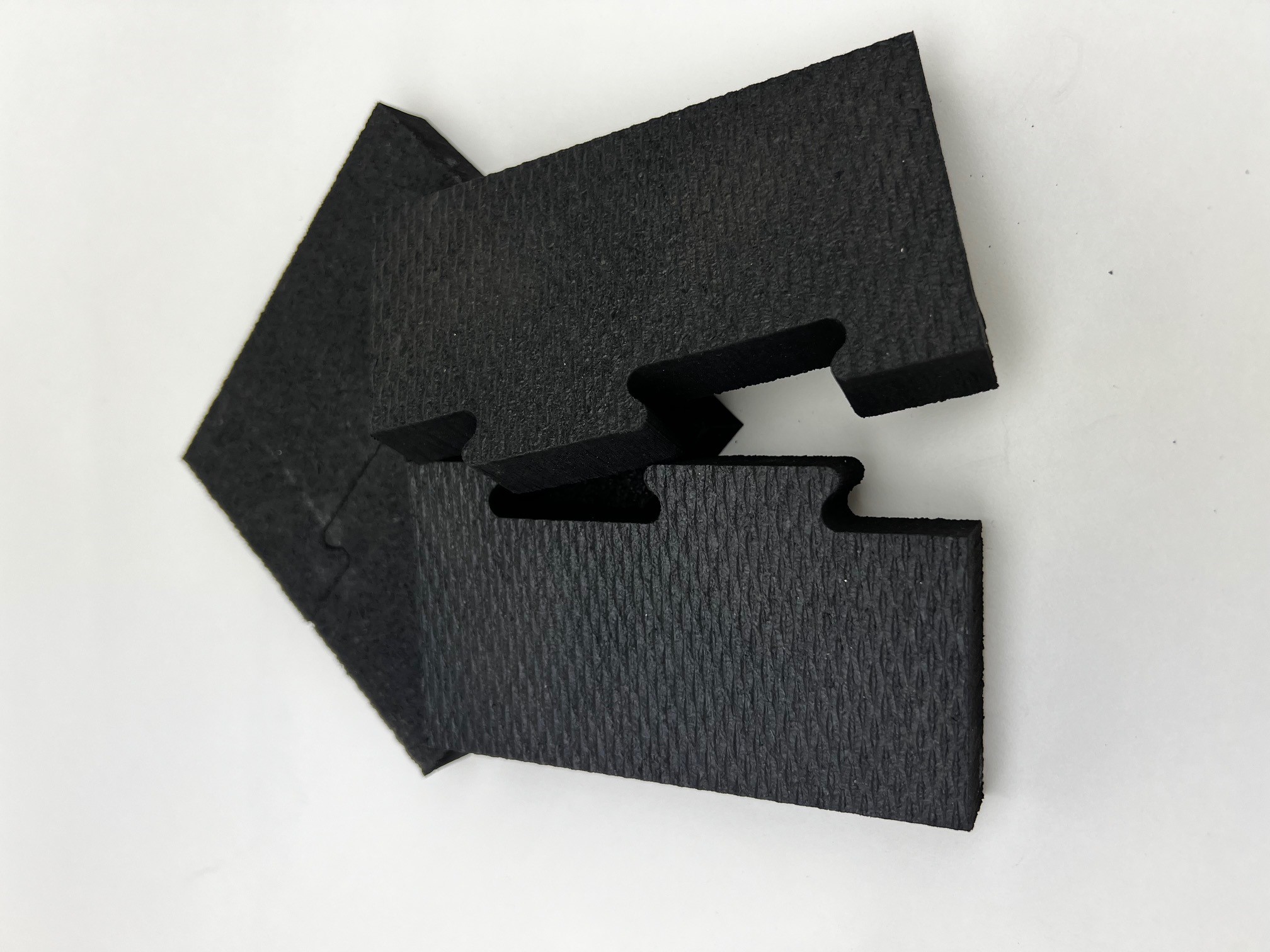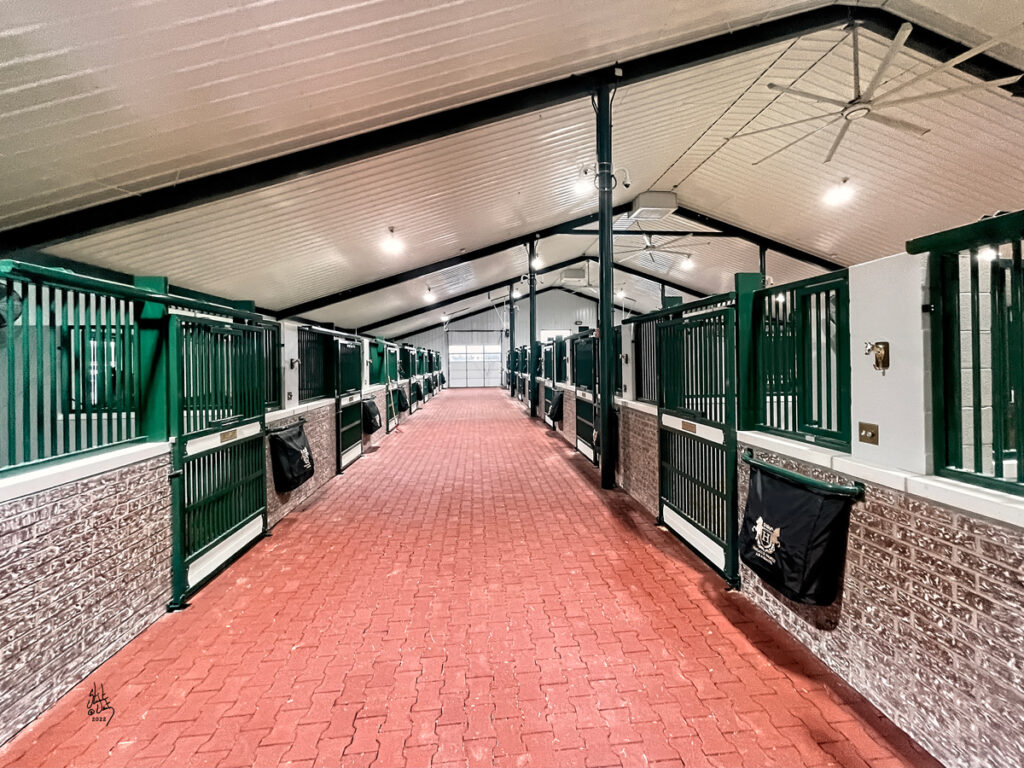Are you currently looking to install new barn aisle flooring? Whether you’re starting from scratch or looking to upgrade older flooring, it’s important to be well-informed about all of the options prior to deciding which one to install in your barn. Barn aisleways are the central hub of most stables. These busy thruways play host to horses, tractors, gators, riders, and even the barn dog. When it comes to barn aisle flooring, it’s important to prioritize safety first. That’s why we recommend rubber pavers over almost all other common flooring options. Here’s why:
Floor #1: Concrete
Concrete is commonly used for aisleways. While concrete seems to have many benefits at first glance, this type of barn aisle flooring can actually be extremely dangerous.
Smooth concrete is an easy to clean option that looks sharp. But if you’ve ever tried to walk a horse down a wet concrete aisle, then you know how quickly concrete floors can turn into an ice skating rink. Concrete is notorious for becoming slippery when even a little damp and creating dangerous situations for horses and riders alike.

Floor #2: Dirt or Sawdust
A sawdust aisleway is perhaps the most inexpensive option for barn aisle flooring. All it takes to install is a little bit of grading and some bags of sand, sawdust, or even shavings. Many barn owners take it upon themselves to install and maintain this type of aisleway.
Unfortunately, equestrians and horses alike pay in other ways for these types of aisles. Dirt or sawdust floors become very muddy when wet, creating a slippery surface, which can take a significant amount of time to dry. Plus, this type of barn aisle flooring is extremely dusty and can exacerbate or even cause respiratory issues.
It’s very difficult to maintain an even dirt aisleway as horses may begin to dig holes if they start to paw on the crossties. Overtime, the footing will become increasingly uneven and cause trip hazards.
Floor #3: Stall Mats
Many barn owners use a combination of dirt or concrete flooring with stall mats laid over top. While this seems to be a good and inexpensive way to reduce some of the risks of concrete and dirt floors, this method has problems of its own.
Stall mats were not designed to be used for barn aisle flooring and are prone to shifting underneath the horse’s movement when used in this manner. The lack of security in the stall mats can become trip hazards, as the mats shift and may even wind up on top of one another, creating significant bumps in the footing.
If you have to use stall mats in your aisleway, consider using Sterling Equine’s interlocking stall mats. Designed to fit seamlessly together, these mats are less likely to shift.

Rubber Pavers Are Essential in Busy Aisleways
Busy aisleways require excellent footing. The best barn aisle flooring must hold up to the constant wear and tear caused by horses, humans, and even vehicles like gators and tractors should they drive through the aisle. Aisleway footing should provide plenty of traction and security, without shifting over time or becoming slippery when wet.
Rubber pavers are our number one recommendation for busy barn aisleways. Interlocking rubber pavers will not become slippery, even when soaked. Instead, the rubber is designed to have shock-absorbing properties for the horse’s comfort and provide excellent grip.With the highest compaction rating on the market and a high elasticity, our rubber pavers are designed to protect your horse’s tendons. When installed properly, rubber pavers also have excellent drainage. Plus, the interlocking pattern of rubber pavers is pleasing to the eye and will only add to the beauty of your stable.
If you want to increase the safety of your horses by installing rubber pavers as your barn aisle flooring, click here to get a free quote.


